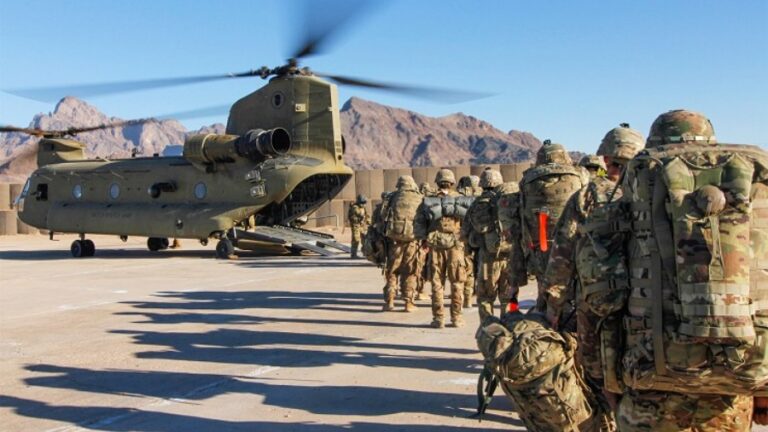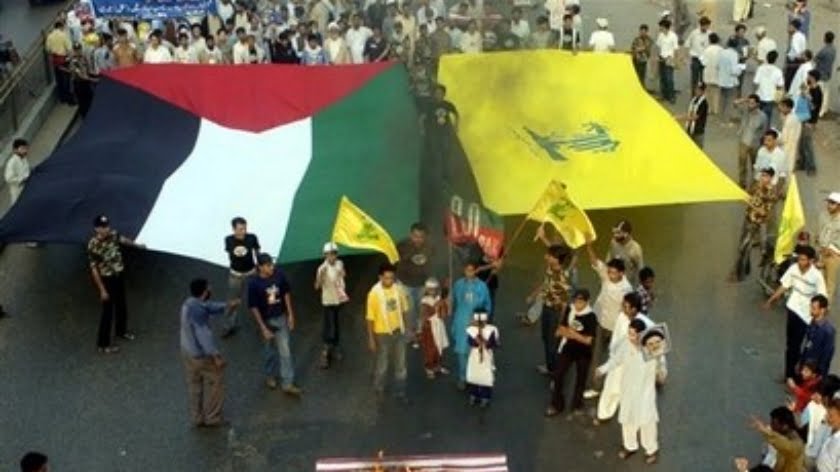The Hole in the Heart of Asia
There was one word missing from Afghanistan President Ashraf Ghani’s speech at the “Heart of Asia” conference at Amritsar concerning Afghan security and Pakistan. So let me say it:
ChinaChinaChinaChinaChinaChinaChinaChinaChinaChinaChinaChina
The last few months have seen Ghani and the US government working assiduously to construct a “light at the end of the tunnel” narrative foretelling the decline of the Taliban, one that pushes Pakistan and China to the sidelines while elevating India.
The US obligingly assassinated the leader of the Taliban, Mullah Mansoor with a drone strike inside Pakistan in May 2016 in order to 1) punctuate the anti-Pakistan tilt of US policy and 2) sow dismay and discord within the Taliban and give Ghani the chance for some political inroads.
A key win was luring Gulbuddin Hekmatyar, the notorious Afghan warlord (and notoriously long-lived; by the time he was target of the first recorded targeted-assassination by drone strike attempt in US history in 2002 he’d already been fighting inside Afghanistan for over two decades) into the government tent, either to serve as a model for peace deals initiated by Kabul or, in an alternate scenario, hoping that he will now be willing to inflict mayhem on the Taliban instead of fighting alongside it.
Meanwhile, there have been dire Western reports not only of factional feuding within the Taliban, and of competition between the Taliban and ISIS. I might note in passing the magical ability of ISIS to pop up when US strategists most need it. In the Philippines, President Duterte turns against the US military and bingo! He’s battling the Isis-affiliated Maute group in Mindanao.
Recently, the Guardian, loyally carrying water for the Atlanticist line, reported that donors were turning away from the Taliban because of growing civilian casualties from its operations.
You don’t believe that, I don’t believe that, even the guy who supposedly said it, Ramutallah Kakazada, didn’t believe it, telling an Arab news outlet that he had been misquoted.
Kakazada, by the way, is Ghani’s go-to guy for ostensibly insider skinny on Taliban decline. At Amritsar, Ghani quoted Kakazada as an authority for assigning all of Kabul’s woes to Pakistan:
As Mr. Kakazada, one of the key figures in the Taliban movement recently said, if they did not have sanctuary in Pakistan, they would not last a month.
Kakazada is not Taliban, by the way, let alone a “key figure.” He’s ex-Taliban, having served in the pre-2001 Taliban government as consul in Karachi. His claim to distinction is that he “maintains close contact” with the Taliban on behalf of the Kabul government.
Actually, the Taliban is doing pretty well in Afghanistan, judging by a headline from June 2016 in Military Times: The Taliban now hold more ground in Afghanistan than any point since 2001.
Indefatigable US hawks are unwilling to abandon a loyal client and are playing the card that Iran and Russia (not just Pakistan!) are supporting the Taliban, presumably on the theory that inclusion of those hot-button evildoers in the Afghanistan equation will sustain US interest in hugging this geostrategic tar baby.
However, US troop levels are going down and the underpowered Afghan government needs a new sugar daddy to keep the struggle against the Taliban going for another decade.
Therefore, Ghani is signing on to Modi’s anti-Pakistan policy.
Ghani’s speech at Amristar was an extravagant tongue bath for India, extolling India’s utterly disinterested benevolence in assisting Afghanistan, bookended with a resounding slap at Pakistan:
Pakistan has generously pledged 500 million dollars for reconstruction of Afghanistan. This fund, Mr. Aziz, could very well be used for containing extremism …
India has persisted in soft-power and spook-centric involvement in Afghanistan (with concomitant attacks on its embassies, consulates, and assets by the Pakistan-oriented Taliban) for decades.
Now it’s openly dipping its hard-power toe into the Afghan quagmire.
Immediately before Amritsar, the Indian government provided a refurbished attack helicopter, the fourth, to the Afghan military and Ghani has reportedly given India a military aid wishlist which would involve India taking a major role in refurbishing Kabul’s arsenal:
Indian assistance would include resurrecting abandoned Russian-made ANDSF Mil Mi-17 ‘Hip’ transport and Mi-35 ‘Hind’ assault helicopters, MiG-21 fighters, Antonov An-32 transport aircraft, Soviet-era field guns, and T-55 and T-72 tanks, as well as restoring an abandoned ordnance factory near Kabul.
According to Sputnik, Ghani also hopes to get factory-fresh Indian battle tanks, howitzers, and planes.
So I doubt we need to look much further in explaining Ghani’s enthusiasm for inviting the assistance of India — and Prime Minister Modi, the alleged promoter of the notorious Gujarat pogrom of 2002 — into his overwhelmingly Muslim country.
That means signing on to Modi’s strategy of isolating Pakistan, diplomatically, morally, and militarily as a sponsor of westward (Afghanistan) and eastward (India/IoK) terrorism. Well, add southward (Balochistan Province) and northward (Gilgit Baltistan territory) terrorism for narrative symmetry.
The general drift under Ash Carter (who seems to have run US Asia policy during the second Barack Obama administration) seems to have been, what Modi wants Modi gets, not just because of India’s value as an anti-China asset, but also because India might be willing to step up and fill the power vacuum in Afghanistan during the American draw-down … and prevent it from being filled by China.
Hey, there’s China again.
Modi recognizes that the US pro-India tilt plus US desperation to salvage the Kabul regime gives him a green light to go after Pakistan to neutralize its terrorist networks in every direction and at the same time strike at the power and prestige of the military apparatus that dominates Pakistan.
So we see retaliatory strikes against terror basis across the Line of Control in Kashmir; the burgeoning security relationship with Afghanistan; and Modi’s ostentatious injection of Indian interest in Pakistan’s internal security matters of Balochistan and Gilgit-Baltistan.
But by going after Pakistan, Modi is also going after the People’s Republic of China’s key South Asian asset. By going into Afghanistan, he’s heightening the Indian factor in a key PRC security concern, the potential traffic in militants between Central Asia and Xinjiang.
PRC-Indian competition is coming down to competing visions of vital national interests.
Should India cut the PRC some slack on the nagging issues of Gilgit Baltistan (mired in the Kashmir dispute) and Balochistan so China can push its One Belt One Road to the Indian Ocean, deliver an economic upgrade to Pakistan, and potentially provide a foothold for the PLA Navy at Gwadar?
Framed that way, it doesn’t seem terribly likely.
So should China give up on Pakistan and cede South Asia as India’s uncontested sphere of influence?
Unfortunately, Modi has probably gone too far in his anti-PRC shenanigans for the PRC to turn its back on the admittedly dysfunctional Pakistan regime.
India is now a little too eager to play the anti-PRC separatist card. It allowed a China democracy promotion conference — also attended by a US government representative — to take place at the Indian base of the Tibetan government in exile at Dharmsala. Uyghurs as well as Tibetans (and Chinese democracy advocates and Falun Gong) got a place at the table. That toothpaste isn’t going back in the tube, I’m afraid.
Recently, the Indian government allowed the Karmapa — head of the Karma Kagyu sect of Tibetan Buddhism — to follow the Dalai Lama with his own visit to Tawang.
The Karmapa is the Dalai Lama’s preferred successor as cultural and spiritual leader of Tibetans (though I wonder what the intensely factional Gelugpa religious establishment thinks), at least in international dealings, and apparently the Dalai Lama’s pre-positioned riposte if the CCP, as expected, manipulates the selection of a new pro-PRC Dalai Lama reincarnation on his passing to claim leadership over the Tibetan community.
Tawang is an important Tibetan monastery town seized by India at Independence and claimed by the PRC for the Tibet Special Autonomous Region; the Karmapa’s visit to the town affirming it is “part of India” is a key tell the future leadership of the Tibetan diaspora is in step with the Indian program concerning the border dispute with China and the overall Indian policy for China.
Add to the Tibetan factor opportunistic Indian meddling in Gilgit-Baltistan and Balochistan to threaten the security and viability of the China Pakistan Economic Corridor (CPEC) and the major push into Afghanistan — all sensitive Muslim regions with implications for PRC rule over the Uyghurs in Xinjiang — hopes that the PRC will believe in the innocence of India’s intentions and give it a free hand in diddling with Pakistan is probably delusional.
The fate of Masood Azhar is perhaps the most reliable barometer of PRC-Indian relations.
Azhar is a rather nasty terrorist with a history of decades of anti-Indian activity. He is also conspicuously coddled by the Pakistan government. In order to highlight Pakistan’s role as a sponsor of terrorism, India has called for Azhar to be put on the UN Sanctions Committee list as a proscribed terrorist. Using its prerogative as a member of the UN Security Council, the PRC has repeatedly placed a technical hold on the designation, most recently in early October.
I consider it unlikely that PRC-Indian friction over Pakistan will diminish in the near future for the simple reason that the American anti-Pakistan tilt might not last forever — what if Trump tires of both Afghanistan and the Great Game, after all?– and Modi has to assume he has a limited time window to make hay while the sun shines and also create enough favorable facts on the ground to convince the US to stick with the policy.
In the end, it will be up to India to decide how forcefully — or recklessly — it will promote its strategy for regional hegemony.
By Peter Lee
Source: Asia Times







